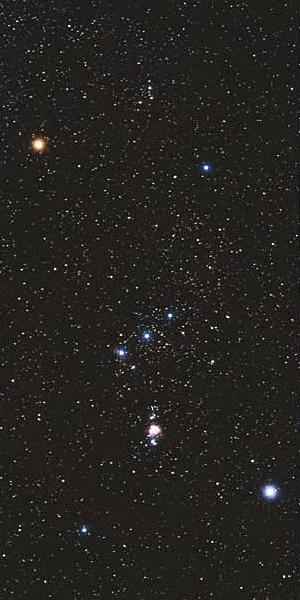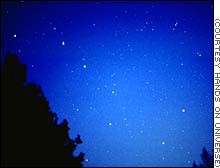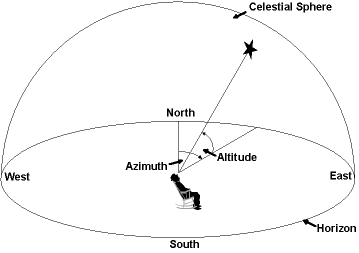|
Objects in the Sky
- The Moon: After the
Sun, the brightest object by far (it always shows the same side to
us, as we can tell from its features).
- Stars: We can see about
8000 (of magnitude 1–6
in order of decreasing brightness) with the naked eye in ideal conditions,
many more with binoculars or a telescope; the brightest one is Sirius.
- Star patterns: Currently 88 official
constellations (including
12 in the Zodiac),
but they change and
more were used earlier; Usually, in a constellation stars only appear
to be close to each other; Some patterns are asterisms,
not constellations.
- Planets: How can we tell planets
and stars apart with the naked eye? (A telescope can make it easier.)
Planets move over time, and stars sometimes "twinkle".
We can see 5-6 naked-eye planets.
- Temporary objects: A continuing stream
of meteors ("shooting
stars"); Occasional comets, asteroids, fireballs, auroras,
exploding stars, ..., and now even spacecraft and
sometimes space junk.
- Fuzzy objects: The brightest parts of
a few galaxies and some star
clusters can be seen with the naked eye; There are nebulae and
many more galaxies;
Most are way too faint to be seen, but not too small (M31 is
much larger than the Moon, IC1396,
an emission
nebula, covers 3°, the Virgo
Cluster 15°!); And then there is the Milky
Way...
- Our goal: Understand what all these
objects are, how far they are, how they relate to
each other, ...
|
 |
HST_125x125.jpg)

HST_125x125.jpg)



![]()